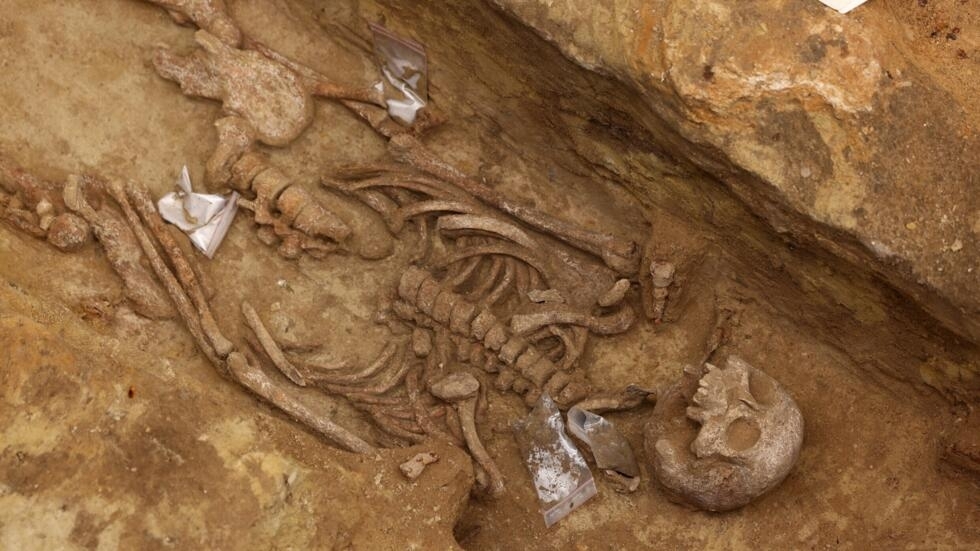Just metres from a busy train station in the heart of Paris, scientists have uncovered 50 graves in an ancient necropolis which offer a rare glimpse of life in the French capital’s precursor Lutetia nearly 2,000 years ago.

One of the skeletons unearthed in an ancient necropolis found metres from a busy Paris train station © Thomas Samson/AFP/File
Somehow the buried necropolis was never stumbled upon during multiple road works over the years, as well as the construction of the Port-Royal station on the historic Left Bank in the 1970s.
However, plans for a new exit for the train station prompted an archaeological excavation.
Camille Colonna, an anthropologist at France’s National Institute of Preventive Archaeological Research (INRAP), told a press conference that there were already “strong suspicions” the site was close to Lutetia’s southern necropolis.

The “Saint Jacques” necropolis, the largest burial site in the Gallo–Roman town of Lutetia, was previously partially excavated in the 1800s.
However, only objects considered precious were taken from the graves, with the many skeletons, burial offerings and other artifacts abandoned.
The necropolis was then covered over and again lost to time.
The INRAP team discovered one section that had never before been excavated.
“No one has seen it since antiquity,” said INRAP president Dominique Garcia.

Colonna said the team was also “very happy” to have found a skeleton with a coin in its mouth, allowing them to date the burial to the 2nd century AD.
The excavation, which began in March, has uncovered 50 graves, all of which were used for burial — not cremation, which was also common at the time.

Ferryman of Hades
The remains of the men, women and children are believed to be Parisii, a Gallic people who lived in Lutetia, from when the town on the banks of the Seine river was under the control of the Roman Empire.
The skeletons were buried in wooden coffins, which were now only identifiable by their nails.
More than half were buried alongside offerings such as ceramic jugs and goblets.
Sometimes a coin was placed in the coffin, or even in the mouth of the dead, a common practice at the time called Charon’s obol.
In Greek mythology, Charon is the ferryman of Hades, and the coin was considered a bribe to carry the souls of the dead across the river Styx.
The archaeologists also found shoes inside the graves, identifying them by the small nails that would be been in the soles.
Colonna said the shoes were placed “either at the feet of the dead or next to them, like an offering”.
Jewellery, hairpins, belts were also discovered.
The entire skeleton of a pig and another small animal was discovered in a pit where animals were thought to have been sacrificed to the gods.
Unlike the excavation in the 1800s, this time the team plans to remove everything from the necropolis for analysis.
“This will allow us to understand the life of the Parisii through their funeral rites, as well as their health by studying their DNA,” Colonna said.
Garcia said that the ancient history of Paris was “generally not well known”.
The unearthed graves open “a window into the world of Paris during antiquity,” he added.


